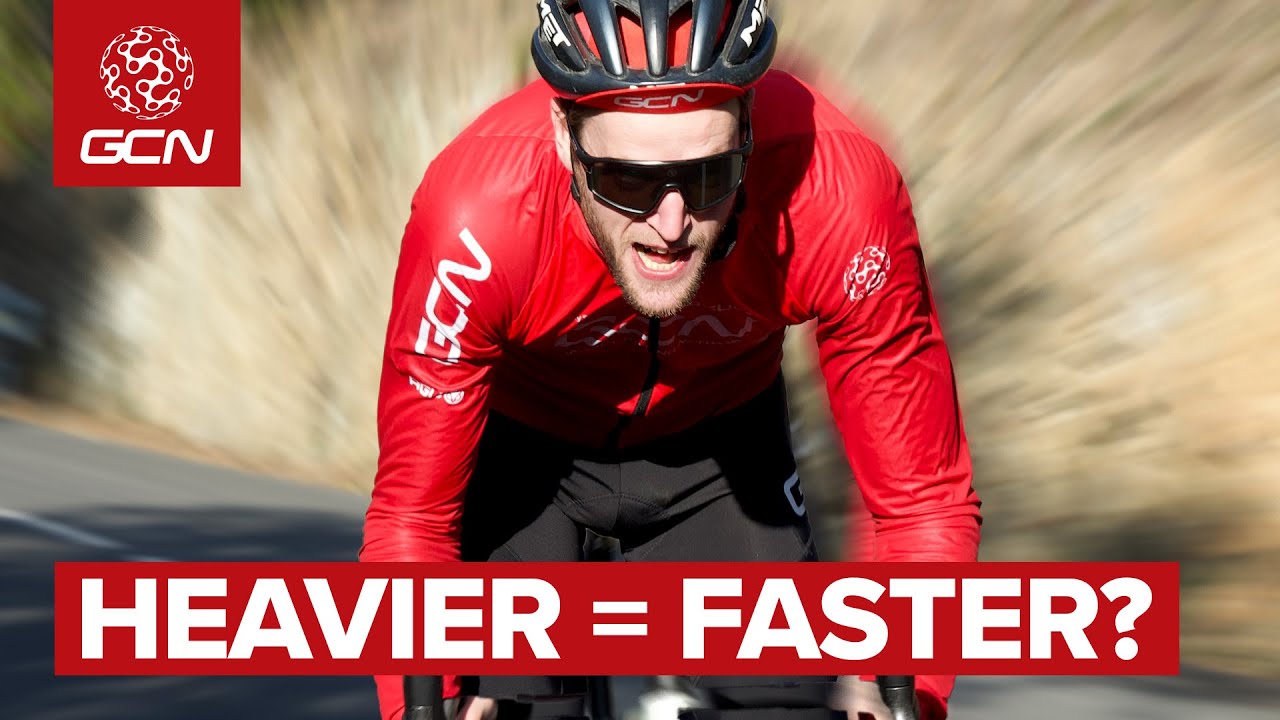Do Heavier Riders REALLY Descend FASTER? with GCN
Source: GCN Youtube Channel: Do Heavier Riders REALLY Descend FASTER?
Video Do Heavier Riders REALLY Descend FASTER? with Global Cycling Network
Video Do Heavier Riders REALLY Descend FASTER? with Global Cycling Network YouTube Channel.
Do Heavier Riders REALLY Descend FASTER?
Do Heavier Riders Descend Faster? Let’s Find Out
Have you ever wondered if heavier riders descend faster on their bikes? It’s a topic that has sparked much debate among cycling enthusiasts. Some believe that heavier riders have a gravitational advantage, while others argue that lighter riders are more aerodynamic. To put this debate to the test, we decided to conduct an experiment to find out the answer once and for all.
The Science Behind Descending Speed
The science we’ve all learned is that in a vacuum, objects drop at the same speed due to the same gravitational acceleration. However, in the real world on our bikes, there is air resistance that comes into play, making the science slightly more complicated. Our experiment aims to determine if a heavier object descends faster due to its greater kinetic energy. Kinetic energy is equal to half of the object’s mass multiplied by the velocity squared, meaning that an object with greater mass should have more energy to overcome the slowing effects of air resistance.
We must acknowledge that there are other factors to consider, such as the effects of a heavier cyclist needing to brake earlier into corners, rolling resistance, and the taller, less aerodynamic nature of heavier cyclists. While our experiment may not account for all of these variables, we hope to shed some light on this intriguing question.
The Experiment Begins
To conduct our experiment, we equipped one of our riders with a 25-kilogram weight vest and sent them down a big descent. In a fair and true scientific approach, we made sure that the rider didn’t pedal at all, rode in a fixed body position, and stuck to the white line for consistency. Their descent without the weight vest would serve as a benchmark for comparison.
The Results Are In
After the descents, we compared our results to see if there was a significant difference in speed between the weighted and unweighted descents. Surprisingly, the results were inconclusive. One rider was only 1 second faster with the weighted vest, while the other was 1 second faster without it. The max speed varied by 4 km/h and 3 km/h, respectively. Both riders noticed differences in their speed and technique but ultimately proved that perceptions can vary.
The Interpretation and Conclusion
Ultimately, our experiment’s results align with the underlying physics, showing that a rider’s mass does have an impact on their descending speed. The heavier rider experienced higher max speeds but only marginally faster overall. The lighter rider felt more confident through corners and achieved a faster descent time, showcasing how technique and body mass can influence a rider’s speed.
What’s interesting is how individual perceptions of speed can vary, with one rider feeling faster through corners and another feeling faster when letting the bike roll. It goes to show that what makes a fast descender isn’t just their weight but also their technique and mental approach.
Do Heavier Riders REALLY Descend FASTER?
In conclusion, our experiment may not have provided a definitive answer to the question of whether heavier riders descend faster, but it has certainly sparked some intriguing discussions. We’d love to hear your thoughts on this topic and whether our results align with your perceptions or experiences. The world of cycling is full of fascinating debates and mysteries, and this is one that continues to captivate enthusiasts. As always, thank you for joining us on this journey, and we look forward to hearing from you in the comments section below.
And now, with the experiment concluded, we’ll head back to the road to continue our ride, pondering the complexities of speed and weight in cycling.
The opinions expressed in this space are the sole responsibility of the YouTube Channel Global Cycling Network and do not necessarily represent the views of CicloNews.










